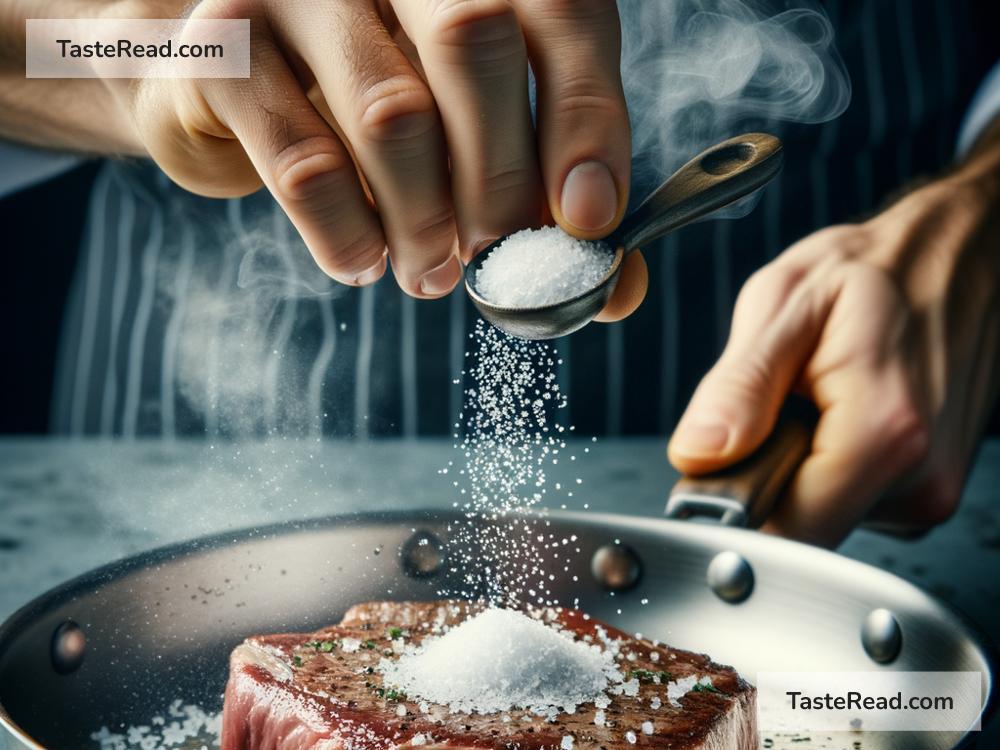The Science of Cooking with Chemical Agility: Techniques and Tips
Cooking is often thought of as an art — a creative process where flavors, textures, and aromas combine into something delicious. But beneath the surface, cooking is also deeply scientific. It involves chemical reactions, physical transformations, and a little bit of chemistry magic. By understanding the science of cooking, you can sharpen your skills in the kitchen and create meals that not only taste better but also consistently turn out the way you want. Let’s explore the science of cooking with chemical agility, along with some straightforward techniques and tips you can use to level up your cooking game.
What Is Chemical Agility in Cooking?
Chemical agility refers to the ability to control and manage the chemical reactions that happen during cooking. When you fry an egg, bake bread, or caramelize onions, chemical reactions are at work. Cooking transforms raw ingredients into foods that are perfectly cooked, flavorful, and safe to eat. Being agile with these processes means you understand how to use heat, ingredients, and tools at just the right moments.
Simply put, cooking with chemical agility isn’t about memorizing complicated equations — it’s about knowing why certain techniques work and applying them with confidence.
Key Chemical Reactions in Cooking
Before diving into tips, let’s look at a few important chemical reactions that happen while cooking.
-
Maillard Reaction (Famous for Browning)
The Maillard reaction is the magical process responsible for the golden brown crust on bread, the sear on a steak, and the flavor-packed caramelization in onions. When heat interacts with proteins and sugars in food, it creates hundreds of new compounds that enhance taste and smell. Understanding this reaction will help you elevate your cooking, especially when grilling, roasting, or sautéing. -
Denaturation and Coagulation (Cooking Proteins)
Proteins are the building blocks of meat, eggs, and dairy. When heated, proteins “denature,” or unravel, and then “coagulate,” or solidify. This process is why eggs turn solid when you fry them or why tough cuts of meat become tender after slow cooking. -
Caramelization (Sweet Transformation)
When sugar molecules are exposed to heat, they break down and create new, sweet and nutty flavors. Caramelization happens in desserts, roasted vegetables, and even coffee beans. -
Leavening (Making Food Rise)
Baking involves chemical reactions between ingredients like yeast, baking soda, or baking powder. These substances produce carbon dioxide bubbles that make doughs and batters rise, giving bread and cakes their soft, airy texture.
Techniques and Tips for Cooking with Science
Now that you know some of the key chemical reactions in cooking, let’s explore techniques and tips that can help you apply this knowledge in the kitchen.
1. Practice Precision with Heat
Heat is the engine driving most chemical reactions in cooking, so controlling it is crucial. Here’s how to do it right:
- Low and Slow for Tender Meat: For cuts of meat with lots of connective tissue (like brisket or pork shoulder), use low heat and long cooking times to break down collagen into gelatin. This creates juicy, flavorful dishes.
- High Heat for Browning: To maximize the Maillard reaction, make sure your pan is hot before searing meats and vegetables. Resist the urge to overcrowd your pan, as the food needs room to brown.
2. Use Acidity Wisely
Acidic ingredients like lemon juice, vinegar, and buttermilk play a big role in cooking by tenderizing proteins and balancing flavors.
- Tenderize Meat with Acid: Marinating meat in acidic liquids can help break down surface proteins, making it more tender. Don’t marinate for too long, though — overdoing it can make meat mushy.
- Brighten Flavors: Adding a splash of acidity at the end of cooking enhances flavor. Try a squeeze of lemon on grilled fish or a dash of vinegar in soups.
3. Correctly Handle Proteins
Cooking eggs, meat, or fish requires proper knowledge of how heat interacts with proteins.
- Eggs: For silky scrambled eggs, cook them low and slow to prevent over-coagulating the proteins. Adding a splash of milk or cream can also help.
- Meat Resting Time: After cooking meat, let it rest for a few minutes. This allows juices to redistribute, resulting in tender and juicy slices.
4. Embrace the Power of Temperature
Invest in a food thermometer to ensure perfect results. Temperature precision helps you avoid undercooked or overcooked dishes.
- Medium-Rare Steaks: Aim for 130°F (54°C) to get that pink, juicy center.
- Safety First: For poultry, cook to an internal temperature of 165°F (74°C) to kill harmful bacteria.
5. Experiment and Record
Cooking is part science and part trial-and-error. Experiment with different methods and ingredients, but take notes on what works and what doesn’t. This will help you refine your techniques over time.
Cooking Chemistry in Everyday Life
You don’t have to be a scientist to cook with chemical agility. Simple decisions, like when to apply heat, how to use salt, or whether to stir, are examples of chemical reactions in action. By paying attention to these details, anyone can unlock the full potential of their ingredients.
Final Thoughts
Cooking with chemical agility isn’t about adding extra complexity or fancy techniques — it’s about using science to make everyday cooking easier and more effective. By understanding how heat transforms food, how ingredients interact, and how timing makes all the difference, you can harness the science of cooking to improve your meals. Whether you’re searing a steak, baking a cake, or making a pot of soup, the principles of chemistry are always there to help you.
So the next time you step into the kitchen, remember: every slice, stir, and sizzle is an opportunity to embrace the science of cooking!


